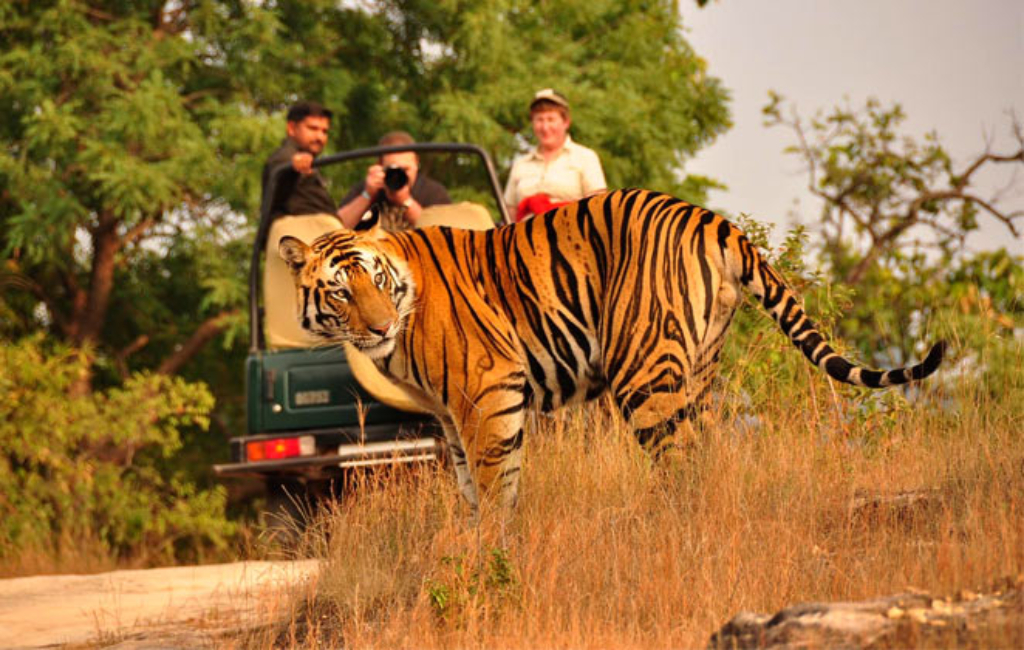India is home to some of the most diverse and majestic wildlife on the planet. From the elusive Royal Bengal tiger to herds of elephants, one-horned rhinoceroses, and countless species of birds and reptiles, the country’s national parks offer unforgettable encounters with nature. However, timing is everything when it comes to a successful wildlife safari.
If you’re planning an India Tour with a focus on wildlife, it’s crucial to understand when and where to go to maximize your chances of seeing animals in their natural habitats—especially tigers, which are famously shy and often hard to spot.
In this blog, we’ll explore the best times to visit India’s top national parks and what makes each season unique for wildlife spotting.
Best Time to Visit National Parks in India
🐾 Understanding India’s Wildlife Seasons
India has three main seasons that impact wildlife visibility:
-
Winter (October to February)
-
Summer (March to June)
-
Monsoon (July to September)
Let’s break down what each season offers.
🌿 Winter (October to February): Pleasant Weather, Lush Landscapes
Best for: First-time visitors, birdwatchers, and family safaris
During the winter months, most national parks open after the monsoon closure (June to September). The jungle is lush and green, the air is crisp, and temperatures are comfortable for safaris. While the dense vegetation can make tiger sightings more challenging, the overall safari experience is magical.
This is also the peak time for birdwatching, as many migratory birds arrive in India during this season.
Top parks to visit in winter:
-
Keoladeo Ghana Bird Sanctuary (Bharatpur) – A birdwatcher’s paradise
-
Periyar Wildlife Sanctuary (Kerala) – Great for elephants and peaceful boat safaris
-
Ranthambore National Park (Rajasthan) – Tigers are still visible, especially near water bodies
Tip: Book safaris early, as this is a popular season for tourists.
🔥 Summer (March to June): The Best Time to Spot Tigers
Best for: Serious wildlife photographers and tiger enthusiasts
If your main goal is to spot tigers, summer is the best time to visit national parks in India. As temperatures rise, animals tend to gather around shrinking water sources, making them easier to spot. Vegetation also thins out, improving visibility.
While the weather can be scorching—sometimes crossing 40°C in central India—early morning and late afternoon safaris can offer incredible wildlife encounters.
Top parks to visit in summer:
-
Bandhavgarh National Park (Madhya Pradesh) – Known for high tiger density
-
Kanha National Park (Madhya Pradesh) – Great for tigers, barasingha, and beautiful sal forests
-
Jim Corbett National Park (Uttarakhand) – Especially in the Dhikala zone for tiger sightings
-
Tadoba National Park (Maharashtra) – Emerging as one of the top spots for consistent tiger views
Tip: Wear light, breathable clothes, use sunscreen, and stay hydrated. Despite the heat, summer safaris offer the highest chances of tiger sightings.
🌧️ Monsoon (July to September): Off-Season, But Unique Experiences
Best for: Offbeat travel, budget trips, and lush green photography
Most national parks in India are closed during the monsoon due to heavy rainfall and breeding seasons. However, some remain partially open and offer a different perspective on the wild.
The landscape is at its most vibrant during this time, with greenery everywhere and dramatic skies. While tiger sightings are rare due to thick forests and low visibility, the monsoon offers peaceful getaways, especially if you’re not focused solely on big cats.
Parks partially open during monsoon:
-
Periyar Wildlife Sanctuary (Kerala) – Open year-round, great for a relaxed eco-tour
-
Satpura National Park (Madhya Pradesh) – Lesser-known, but offers walking safaris and boat rides
-
Valley of Flowers National Park (Uttarakhand) – Though not for wildlife spotting, it blooms spectacularly during monsoon
Tip: This is a good time for budget-friendly wildlife India tours package options since fewer tourists travel during this season.
🐅 When Is the Best Time to Spot Tigers?
To directly answer the main question:
March to June (summer months) offer the best chances to see tigers in the wild.
However, if you prefer comfortable weather and don’t mind fewer sightings, October to February is ideal. Each season has its charm, and your personal comfort, budget, and expectations should guide your timing.
🧭 Final Thoughts: Plan Your Wildlife Tour the Smart Way
India’s national parks each have their own rhythm, beauty, and specialties. Whether you’re planning your first safari or are a seasoned wildlife lover, understanding the best times to visit can make or break your experience.
For a seamless experience, consider choosing a wildlife India tours package that includes accommodations, expert guides, and safari permits. It saves time, ensures better planning, and often comes with local insights that can increase your chances of exciting wildlife sightings.
So pack your binoculars, charge your camera, and choose the season that suits your travel style best. An unforgettable jungle adventure awaits you on your India Tour.
Ready to spot a tiger in the wild? Let nature take the lead—just make sure you’re there at the right time.
